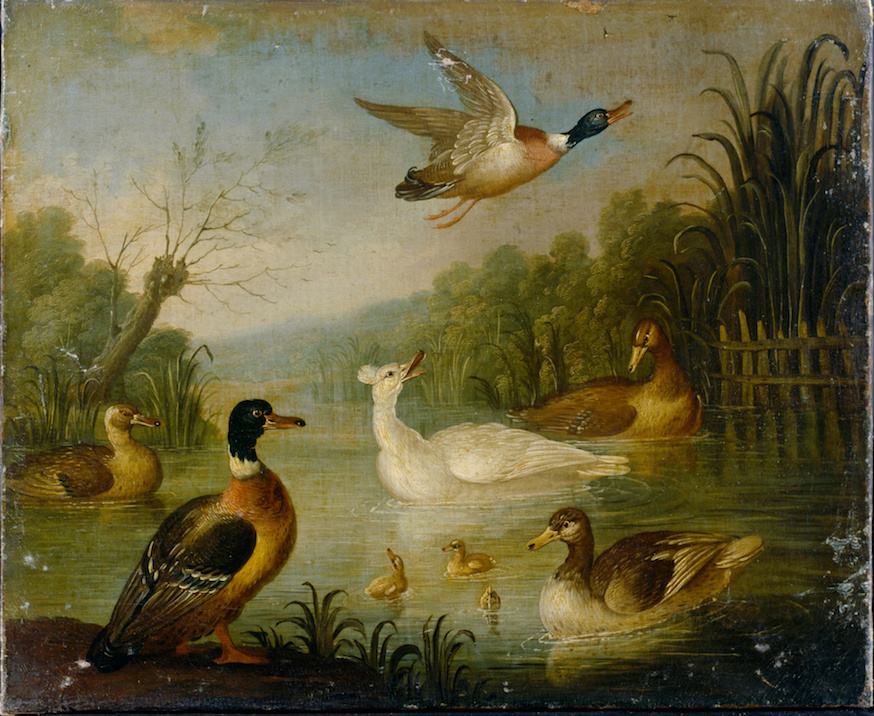I have had a duck fetish since boyhood. I used to play a role similar to that of a caddie when my father went duck hunting. We lived at Colac in the lakes country of the Western District in Victoria. My father was President of the Gun Club so our years were divided into the various game seasons for quail, ducks and hares. We also shot rabbit and swan as well as other feral animals that were annoying the farmers, like pigs, cats and wild dogs. They were different times.
The prize game however were the first three, all rating equal on the gastronomic charts. The ducks and quail are native to Australia. They fly down from Asia to breed on the fertile volcanic banks of the lakes and in the harvested fields of wheat. The ducks feed on the aquatic micro-fauna and the quail fatten up eating the grain left on the ground after the passage of the harvesting machines on the plains.
But it was the duck shoots that presented the greatest challenge. The ducks could recognise the outline of a shooter and his gun at a glimpse, the flock would be warned and escape from the area with discipline and haste, not to return for hours. This problem was solved by the hunters building hides early in the season and then arriving before sunrise for the morning shoot. The other indispensable aids were a flask of King George IV scotch whisky and a well-trained gun dog to gather the wounded quarry from the lake after it had been shot.
The killed ducks were divided according to need and the hunters returned in triumph to their homes and families smelling of gunpowder and marsh. They cleaned and plucked the birds ready to be cooked (the nasty work was all done by the men!), feeding any unwanted remains to their dogs. The guns would be cleaned and packed away, ready for the next shoot.
Duck became a family luxury to be enjoyed for Sunday lunch or for dinner with valued guests. The favourite dish of ours was ‘Wild Duck Oporto’. A base sauce was prepared from the carcasses. The bones were browned with mirepoix, herbs and spices, including some juniper berries, and a 50/50 mixture of red wine and port to make the lightly thickened sauce. The meat was gently browned in a skillet and then cooked at a slow simmer in the sauce. Wild mushrooms picked on the shoot would be added to the sauce to create a rich dish heavily perfumed with the gamey aromas of the duck. Served with an aged decanted bottle of Penfold’s St Henri, the guests would be blown away.
It is of course illegal for protected species of game, which include wild duck and quail, to be sold. The same is true of ortolans in France. Even so the best gourmets seem to have enjoyed them prepared by their favourite chef. Michel Guérard told me that chefs are not ornithologists and that they may occasionally mistake ortolans for quail, as his sous-chef did with our table one time. The guests, like us, are generally very forgiving and ignore the mistake, even though the ortolans are distinctively smaller and recognisable to those ‘in the know’, commes ils dits!
The most common wild duck are the Brown and the Muscovy. Jill Wran, wearing her farmer’s hat, breeds Muscovy ducks, with their dark red flesh for which the au porto method works perfectly. But I know of no one who breeds brown ducks. The other ducks that are commercially available are the white Pekin duck from Luv-a-Duck which supplies the major supermarkets. My commercial choice would be the Grimaud Duck available from Game Farm at various farmers’ markets around town.
The Pekin duck is perfectly suitable for most Asian preparations. It is easy to roast (1hr15mins at 170 deg C.) and it will feed a family of four to five easily and cheaply. Remember to save the fat – a sauce made with white wine, a little balsamic vinegar and some black olives or fig will make a splendid dinner with very little trouble.
Duck fat is not only healthy, it is low in triglycerides and has a high burning temperature. You should use only duck fat when sautéing potatoes as they colour up perfectly. The Pekin duck has a lot of fat to meat. This crisps up the skin perfectly for Asian dishes like Pekin Duck, but it is perhaps less suited for braising.
Famous restaurants that specialise in duck include the very grand La Tour D’Argent in the centre of Paris. La Tour roasts Muscovy ducks rare and then uses a silver press, not unlike a small wine press, to extract the blood and juices from the carcass. The sauce is made with the extract and some fine Cognac. The restaurant numbers each carcass individually and presents a card with the number to the guest. They are currently up into the second million of ducks used over the last 100 years!
Beijing has its share of ‘duck’ restaurants including the Sick Duck, the Wall Street Duck and the Quianmen Roast Duck – where the standard meal was ‘Four Ways Duck’ writes Nina Simonds in her book China’s Food. This dish featured cold stuffed duck neck, roasted duck, vegetables cooked in duck fat and a duck soup. Today the menu offers over 200 dishes using every conceivable part of the bird.
The Grimaud duck is the best one for simple roasting and braising. It has a higher ratio of meat to fat and the breast is double the thickness of the Pekin duck and more suited to grilling. A show-off dish is to have the breast grilled medium rare and the leg and wing braised, perhaps in the port sauce. The pink flesh of the breasts contrasts beautifully with the deeply coloured sauce.
The other preparation I would like to mention is preserved duck, Confit de Canard, the great dish of France’s south-west. In this area, most ducks are bred for the fattened liver, the foie gras. The meat is almost a by-product of the foie gras industry. The confit is a way for the farmer to preserve meat for the winter. The leg is heavily seasoned with grey salt, black pepper, thyme, marjoram and bruised garlic cloves. It rests in this mix for two days before being wiped clean and then cooked in duck fat at 80 deg C. for six hours. It is then packed into preserving jars, covered with the melted fat and refrigerated. The confit is simply grilled or included in the classic dish of the area, Cassoulet.
I often view with evil intent families of ducks walking towards the ponds in Centennial Park. I dream of ways to entrap them so I can once again experience those rich, delicious dishes of my childhood.

Portrait of Tony Bilson by John Olsen





